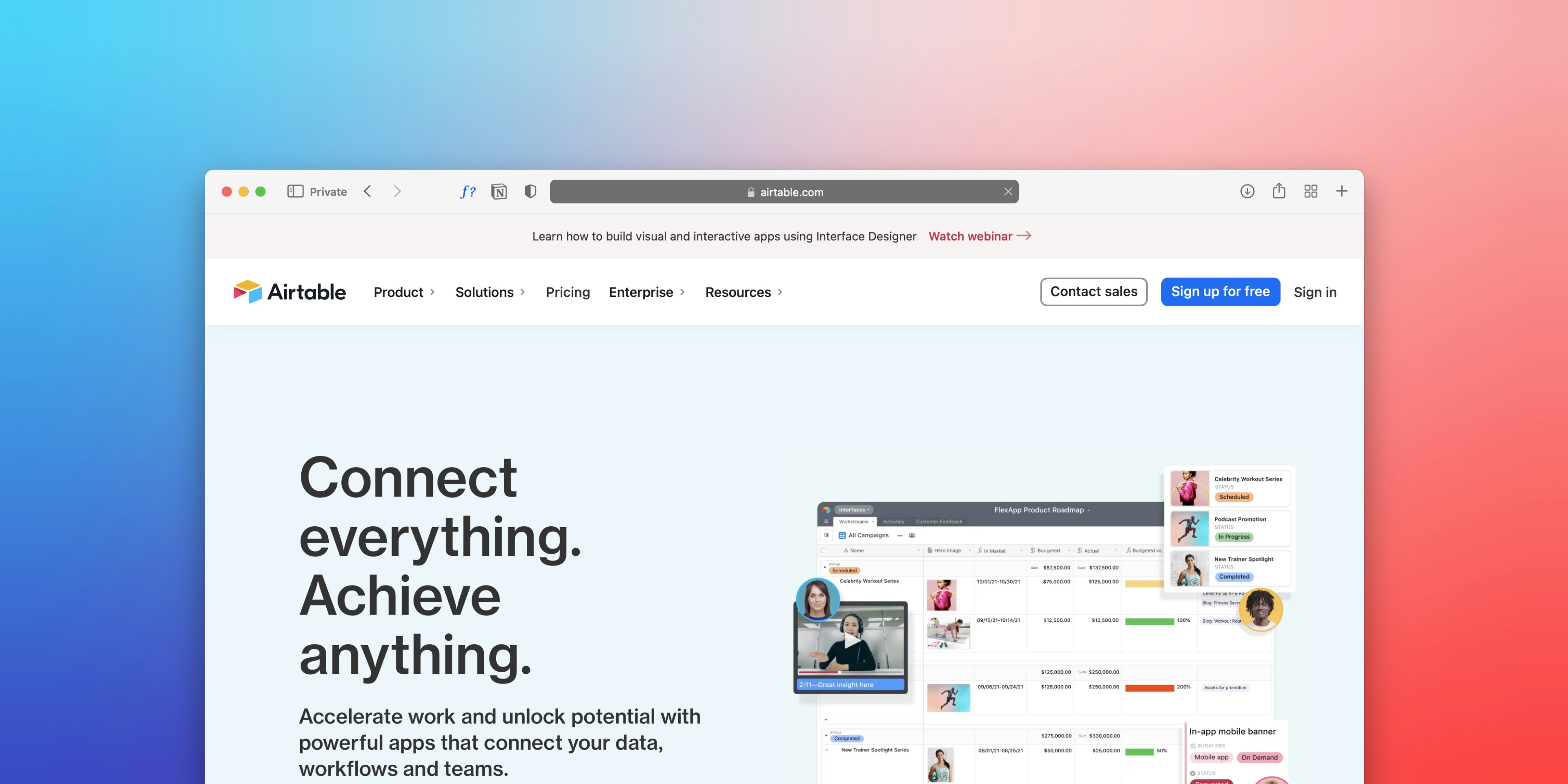-p-2000.png)


Website Maintenance Checklist for Better Performance

A website has an important role in your business’s success online. However, there might be several factors that prevent your website from attracting visitors and generating leads as expected.
Though it is normal for websites to encounter glitches that might interfere with their functions or other operations, you need to test your website’s performance regularly.
Why is Website Maintenance Important?
Like monitoring your website’s performance regularly, you need to perform website maintenance frequently. Website maintenance is critical for detecting technical flaws early on, improving the user experience, and ensuring the site is search engine and mobile friendly, resulting in more conversions and sales.
What Does Website Maintenance Include?
Website maintenance tasks include performing regular website updates, checking for security vulnerabilities, monitoring performance, and aligning the site with the latest trends.
1. Security Maintenance
Cybercrimes are at an all-time high, which is why you need to ensure that your site is protected against any unforeseen threat. Security maintenance covers website data, user information, server stability, regular backups, site updates, and so on. All these measures contribute to running your business smoothly while ensuring the safety of user information.
2. Technical Maintenance
From a technical perspective, caring for your website might seem complicated as it involves multiple tasks.
Technical tasks under website maintenance include checking for glitches, module updates, functionality testing, compatibility testing, website performance testing, monitoring, and so on. Unresolved technical issues can affect a website’s performance, thereby impacting the user experience.
3. Marketing Maintenance
Once you take care of the security and technical sides of your website, the next most important aspect of site maintenance is marketing.
Marketing maintenance intends to attract visitors, convert them into customers, and offer them an experience that they will cherish forever. The first step to marketing maintenance includes focusing on Google Analytics data and Search Console reports.
The above activities will make your site search engine- and user-friendly, thereby improving your site’s visibility and driving traffic.
The Complete Website Maintenance Checklist
To make this easier for you, we have put together all the tasks necessary for performing website maintenance on a weekly, monthly, quarterly, and annual basis.
You can refer to the below checklist to ensure that you are covering each of the tasks, including SEO, security, technicality, and so on to improve your site’s performance.
Weekly Website Maintenance Checklist
1. Analyze your Metrics
Right from tracking the number of visitors, how they behave, traffic sources, and the type of content that attracts visitors to the factors that convert them into loyal consumers, your website offers you all the data you need to optimize it for your target audience.
Analyze all these metrics weekly to identify any glitches that require your immediate attention. If you evaluate your site’s performance in isolation, you might miss out on important matters. Hence, we recommend reviewing your competitors’ metrics while analyzing your data.
2. Create backups
Reviewing your metrics will help you fix several issues with your website. But if you fail to create backups, you might end up losing a lot or most of your work or the website.
You can either opt to create backups manually or you can reach out to hosting providers to help you with this task.
3. Install Updates
Another important task to ensure your site’s proper functioning is installing updates as soon as possible. This maintenance task includes reviewing and fixing security glitches, as well as core, plugin, and theme updates. Performing this maintenance task regularly will keep your site secure and simplify functionality updates.
Seek expert help to install themes or plugins, as their functionalities need to be tested before they are made live to ensure compatibility.
4. Find and fix broken links
To find broken links on your website, you can use website crawlers, such as Screaming Frog, or a broken link checker tool.
How to fix the broken links?
- Look for typos or spelling errors in the URL
- Set up redirects to the new page or any other relevant page on the site.
- Remove/replace links from pages pointing to the broken URL.
Monthly Website Maintenance Checklist
5. Analyze website performance

Keep track of your website’s performance reports to identify any potential problem spots. Tools, such as Google Analytics, can be used for monitoring the traffic to the website, as well as orders, bounce rates, and form submissions.
Regular analysis and monitoring of these metrics on a monthly basis will help you identify any problems.
You can set up alerts to email you the trouble spots so that you can fix the issue immediately. Some of the examples include high bounce rates, a dip in conversion rates or goals, and even an increase or decrease in visitor engagement.
6. Check the loading speed of your website.
Users grow impatient when a website takes more than three seconds to load, and they tend to abandon sites that take longer to load. Even if visitors stick around, a site that takes too long to load will fail to impress.
You can use tools, such as Google Page Speed Insights, to review the speed of your site and then fix the pages that take too long to load.
7. Create content that matters
Content is always the king. Writing and publishing new and relevant content will attract an audience and search engines. By publishing relevant content regularly, you increase your site’s chances of appearing in relevant searches.
8. Make your site SEO-friendly
Optimizing your site for relevant keywords is one of the most important maintenance tasks. You already have the relevant keywords. But the relevance might change over time. Experts recommend checking the relevancy of these keywords every now and then so that you stay on top of the game.
Quarterly Website Maintenance Checklist
9. Change passwords
Using a strong password will prevent unauthorized access to your site. We recommend following the best practices for creating passwords (e.g., two-factor authentication). Ideally, changing your passwords on a quarterly basis will prevent any unauthorized access, as it will make it challenging for hackers to crack them.
10. Test the site’s forms

If your website is using forms to capture information, you need to ensure that all the user data is safe with you. Check your forms' functionalities and see if everything is on track.
Review the entire submission process to ensure that no user information is compromised.
11. Test your social media links
Social media has become one of the most powerful tools to help expand business horizons. Lately, people prefer to stay connected with their favorite brands via social media. This makes it imperative to ensure that all your social media URLs are functioning. Broken URLs could cause you to lose countless new followers or shares. Check these URLs to ensure they are working.
12. Perform a complete site audit
Conducting an audit of your entire website will help you understand what needs to be improved. Test if your website is compatible across all browsers, run all functionalities to see if they are working well, review automated messages, and check if they are sent on time.
Conduct a content audit and review blogs, informational pages, FAQs, descriptions, etc. With a complete site audit, you can improve the user experience by identifying and fixing glitches.
Annual Website Maintenance Checklist
13. Conduct user testing
Consumer behavior tends to change over time. To meet the changing needs of your users, your website needs to make intuitive sense for them across all devices and browsers.
A number of new devices are being launched on the market, so it is ideal to have your website tested on these devices once a year. Conducting user testing will help ensure that your website makes intuitive sense to visitors.
14. Update the website’s header and footer
The website’s header and footer showcase important information. Ensure that all the information provided in the header and footer is up to date.
Imagine that you have included your working hours in the footer. Suppose someone tries to contact you at the times specified on your site only to be disappointed that you are unavailable because you changed your working hours but forgot to update them on your site.
Keep all the information in your site’s header and footer up to date.
15. Renew domain name
Imagine a user trying to access your site only to be welcomed by "Domain expired." Now, that is disappointing! Always ensure that your domain name and hosting status are renewed on time. Checking these aspects once a year will help you offer a great user experience.
16. Conduct a content audit
All website owners strive to publish relevant and engaging content to entice their visitors. Updated content helps to enhance your site’s search engine rankings as well.
A yearly content audit will help you make the best use of your content. Cataloging your site’s content to review its performance will help you discover topics that drive the highest conversions. Also, you can identify the content that fails to drive user attention. All this information will help enhance your content strategy.
Final Word
Website maintenance comprises a range of tasks that will help run your website smoothly. Website maintenance might seem to be daunting at first, but hiring a professional maintenance service provider will make it easier for you.
With regular website maintenance, you can safeguard your website against threats and enhance user experience thereby driving more conversions and improving sales.
If you are contemplating on whether your website needs maintenance support or not, perform a website audit and review the results.
Need help with website performance maintenance? Contact us for assistance.

FAQ
Editorial Team
Publisher
A website has an important role in your business’s success online. However, there might be several factors that prevent your website from attracting visitors and generating leads as expected.
Though it is normal for websites to encounter glitches that might interfere with their functions or other operations, you need to test your website’s performance regularly.
Why is Website Maintenance Important?
Like monitoring your website’s performance regularly, you need to perform website maintenance frequently. Website maintenance is critical for detecting technical flaws early on, improving the user experience, and ensuring the site is search engine and mobile friendly, resulting in more conversions and sales.
What Does Website Maintenance Include?
Website maintenance tasks include performing regular website updates, checking for security vulnerabilities, monitoring performance, and aligning the site with the latest trends.
1. Security Maintenance
Cybercrimes are at an all-time high, which is why you need to ensure that your site is protected against any unforeseen threat. Security maintenance covers website data, user information, server stability, regular backups, site updates, and so on. All these measures contribute to running your business smoothly while ensuring the safety of user information.
2. Technical Maintenance
From a technical perspective, caring for your website might seem complicated as it involves multiple tasks.
Technical tasks under website maintenance include checking for glitches, module updates, functionality testing, compatibility testing, website performance testing, monitoring, and so on. Unresolved technical issues can affect a website’s performance, thereby impacting the user experience.
3. Marketing Maintenance
Once you take care of the security and technical sides of your website, the next most important aspect of site maintenance is marketing.
Marketing maintenance intends to attract visitors, convert them into customers, and offer them an experience that they will cherish forever. The first step to marketing maintenance includes focusing on Google Analytics data and Search Console reports.
The above activities will make your site search engine- and user-friendly, thereby improving your site’s visibility and driving traffic.
The Complete Website Maintenance Checklist
To make this easier for you, we have put together all the tasks necessary for performing website maintenance on a weekly, monthly, quarterly, and annual basis.
You can refer to the below checklist to ensure that you are covering each of the tasks, including SEO, security, technicality, and so on to improve your site’s performance.
Weekly Website Maintenance Checklist
1. Analyze your Metrics
Right from tracking the number of visitors, how they behave, traffic sources, and the type of content that attracts visitors to the factors that convert them into loyal consumers, your website offers you all the data you need to optimize it for your target audience.
Analyze all these metrics weekly to identify any glitches that require your immediate attention. If you evaluate your site’s performance in isolation, you might miss out on important matters. Hence, we recommend reviewing your competitors’ metrics while analyzing your data.
2. Create backups
Reviewing your metrics will help you fix several issues with your website. But if you fail to create backups, you might end up losing a lot or most of your work or the website.
You can either opt to create backups manually or you can reach out to hosting providers to help you with this task.
3. Install Updates
Another important task to ensure your site’s proper functioning is installing updates as soon as possible. This maintenance task includes reviewing and fixing security glitches, as well as core, plugin, and theme updates. Performing this maintenance task regularly will keep your site secure and simplify functionality updates.
Seek expert help to install themes or plugins, as their functionalities need to be tested before they are made live to ensure compatibility.
4. Find and fix broken links
To find broken links on your website, you can use website crawlers, such as Screaming Frog, or a broken link checker tool.
How to fix the broken links?
- Look for typos or spelling errors in the URL
- Set up redirects to the new page or any other relevant page on the site.
- Remove/replace links from pages pointing to the broken URL.
Monthly Website Maintenance Checklist
5. Analyze website performance

Keep track of your website’s performance reports to identify any potential problem spots. Tools, such as Google Analytics, can be used for monitoring the traffic to the website, as well as orders, bounce rates, and form submissions.
Regular analysis and monitoring of these metrics on a monthly basis will help you identify any problems.
You can set up alerts to email you the trouble spots so that you can fix the issue immediately. Some of the examples include high bounce rates, a dip in conversion rates or goals, and even an increase or decrease in visitor engagement.
6. Check the loading speed of your website.
Users grow impatient when a website takes more than three seconds to load, and they tend to abandon sites that take longer to load. Even if visitors stick around, a site that takes too long to load will fail to impress.
You can use tools, such as Google Page Speed Insights, to review the speed of your site and then fix the pages that take too long to load.
7. Create content that matters
Content is always the king. Writing and publishing new and relevant content will attract an audience and search engines. By publishing relevant content regularly, you increase your site’s chances of appearing in relevant searches.
8. Make your site SEO-friendly
Optimizing your site for relevant keywords is one of the most important maintenance tasks. You already have the relevant keywords. But the relevance might change over time. Experts recommend checking the relevancy of these keywords every now and then so that you stay on top of the game.
Quarterly Website Maintenance Checklist
9. Change passwords
Using a strong password will prevent unauthorized access to your site. We recommend following the best practices for creating passwords (e.g., two-factor authentication). Ideally, changing your passwords on a quarterly basis will prevent any unauthorized access, as it will make it challenging for hackers to crack them.
10. Test the site’s forms

If your website is using forms to capture information, you need to ensure that all the user data is safe with you. Check your forms' functionalities and see if everything is on track.
Review the entire submission process to ensure that no user information is compromised.
11. Test your social media links
Social media has become one of the most powerful tools to help expand business horizons. Lately, people prefer to stay connected with their favorite brands via social media. This makes it imperative to ensure that all your social media URLs are functioning. Broken URLs could cause you to lose countless new followers or shares. Check these URLs to ensure they are working.
12. Perform a complete site audit
Conducting an audit of your entire website will help you understand what needs to be improved. Test if your website is compatible across all browsers, run all functionalities to see if they are working well, review automated messages, and check if they are sent on time.
Conduct a content audit and review blogs, informational pages, FAQs, descriptions, etc. With a complete site audit, you can improve the user experience by identifying and fixing glitches.
Annual Website Maintenance Checklist
13. Conduct user testing
Consumer behavior tends to change over time. To meet the changing needs of your users, your website needs to make intuitive sense for them across all devices and browsers.
A number of new devices are being launched on the market, so it is ideal to have your website tested on these devices once a year. Conducting user testing will help ensure that your website makes intuitive sense to visitors.
14. Update the website’s header and footer
The website’s header and footer showcase important information. Ensure that all the information provided in the header and footer is up to date.
Imagine that you have included your working hours in the footer. Suppose someone tries to contact you at the times specified on your site only to be disappointed that you are unavailable because you changed your working hours but forgot to update them on your site.
Keep all the information in your site’s header and footer up to date.
15. Renew domain name
Imagine a user trying to access your site only to be welcomed by "Domain expired." Now, that is disappointing! Always ensure that your domain name and hosting status are renewed on time. Checking these aspects once a year will help you offer a great user experience.
16. Conduct a content audit
All website owners strive to publish relevant and engaging content to entice their visitors. Updated content helps to enhance your site’s search engine rankings as well.
A yearly content audit will help you make the best use of your content. Cataloging your site’s content to review its performance will help you discover topics that drive the highest conversions. Also, you can identify the content that fails to drive user attention. All this information will help enhance your content strategy.
Final Word
Website maintenance comprises a range of tasks that will help run your website smoothly. Website maintenance might seem to be daunting at first, but hiring a professional maintenance service provider will make it easier for you.
With regular website maintenance, you can safeguard your website against threats and enhance user experience thereby driving more conversions and improving sales.
If you are contemplating on whether your website needs maintenance support or not, perform a website audit and review the results.
Need help with website performance maintenance? Contact us for assistance.
FAQ
Editorial Team
Publisher




Hi, I'm Mike!
If you are enjoying the article, feel free to subscribe to our monthly newsletter.
If you have any project requirements, please contact us.




.png)









